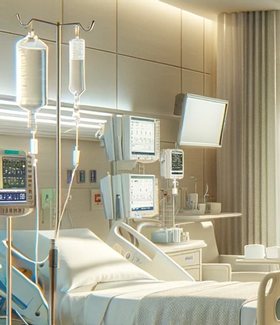Critical Care Guideline Changes from the Society of Critical Care Medicine
 The Society of Critical Care Medicine's (SCCM) 2024 Critical Care Congress met in January 2024 and presented some updated guidelines “regarding the use of corticosteroids and glycemic control in critical illness along with a new guideline on recognizing and responding to clinical deterioration outside the intensive care unit (ICU).” Hospitals are strongly encouraged to review the updated guidelines and consider revising their own policies, protocols, and practices if indicated.
The Society of Critical Care Medicine's (SCCM) 2024 Critical Care Congress met in January 2024 and presented some updated guidelines “regarding the use of corticosteroids and glycemic control in critical illness along with a new guideline on recognizing and responding to clinical deterioration outside the intensive care unit (ICU).” Hospitals are strongly encouraged to review the updated guidelines and consider revising their own policies, protocols, and practices if indicated.
In this article, Critical Care Guideline Changes Boost Corticosteroid Uses, Role of Families, Medscape provides a summary review of the changes.
Use of Corticosteroids
The focused update to guidelines for corticosteroids in sepsis, acute respiratory distress syndrome (ARDS), and community-acquired pneumonia (CAP) changed several recommendations from the 2017 iteration based on more recent evidence.
Glycemic Control in the ICU
An update to the glycemic control guidelines for critically ill adults and children, last revised in 2012, changed the insulin infusion recommendations and gave endorsement to explicit decision support tools.
Clinical Deterioration Outside the ICU
SCCM issued a new guideline for recognizing and responding to clinical deterioration outside the ICU.
In it, the society encouraged the incorporation of families into care practices, suggesting that family and partner concerns be utilized as part of hospital early warning systems, as these individuals should be able to recognize the differences in a patient's clinical status that may indicate deterioration, and then alert care staff.
This article falls under Clinical/Patient Safety in the Enterprise Risk Management (ERM) risk domains.
Risks associated with the delivery of care to patients, residents, and other health care customers. Clinical risks include failure to follow evidence-based practice, medication errors, hospital acquired conditions (HAC), serious safety events (SSE), health care equity, opportunities to improve safety within the care environments, and others.
